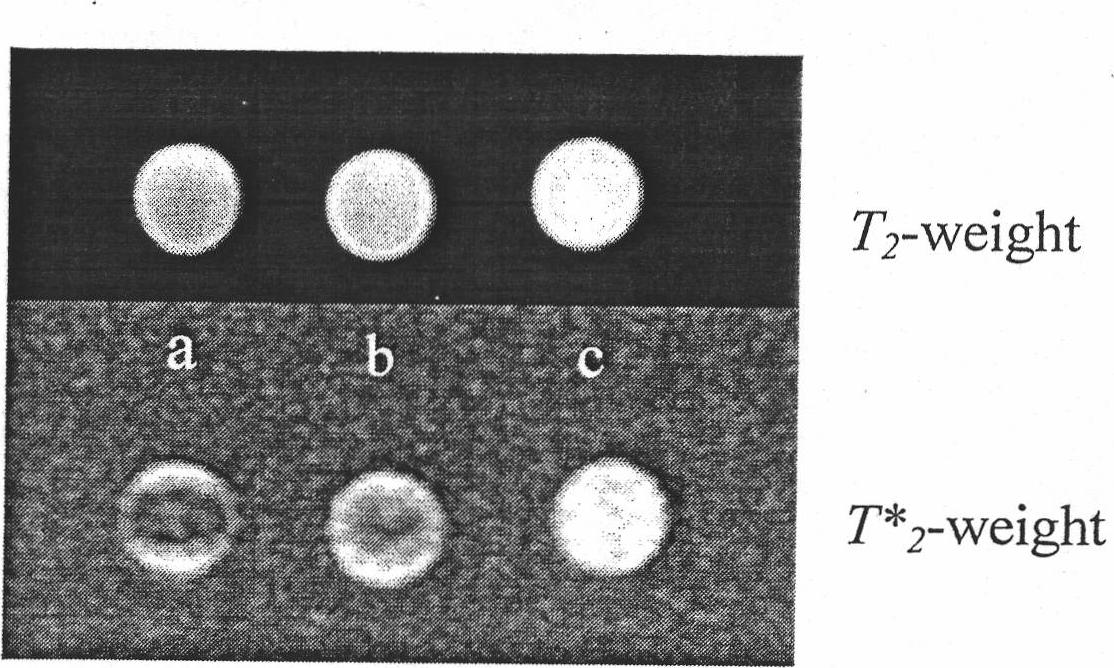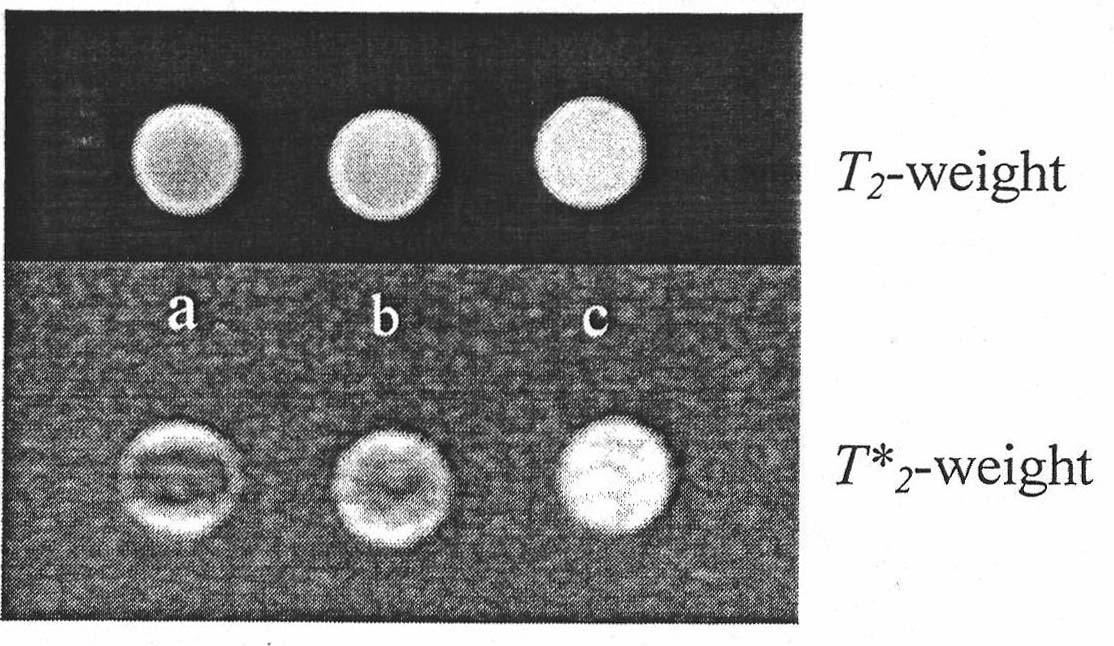Preparation and application of polymer-coated magnetic nanoparticle contrast agent
A magnetic nanoparticle and polymer technology, applied in the field of medical imaging diagnostics, can solve the problems of cumbersome preparation methods of superparamagnetic contrast agents, and achieve the effect of safe use, good effect, and improved imaging contrast.
- Summary
- Abstract
- Description
- Claims
- Application Information
AI Technical Summary
Problems solved by technology
Method used
Image
Examples
Embodiment 1
[0039] Preparation of dextran-coated magnetic nanoparticles:
[0040] Get 3.22g ferric chloride (FeCl 3 ·6H 2 O), 1.18g ferrous chloride (FeCl 2 4H 2 O) and 2.5g dextran are dissolved in 100ml distilled water to form a transparent and stable microemulsion. Take 1ml of ammonia solution with a concentration of 28% and dilute it with 9ml of double distilled water, slowly add it to the microemulsion under constant stirring, and keep the temperature at 20°C for 130 minutes; centrifuge and precipitate to obtain stable dextran-wrapped magnetic nanoparticles Aqueous solution of particles;
[0041] The particle size is about 30-100nm as detected by transmission electron microscope (TEM).
Embodiment 2
[0043] Preparation of Magnetic Nano Contrast Agents:
[0044] 1. Take 2ml of dextran-coated magnetic nanoparticle aqueous solution, add 200ul 10mol / L potassium periodate solution, and react in the dark for 5-8 hours;
[0045] 2. The above solution is centrifuged, and the separated magnetic nanoparticles are dissolved in a boric acid buffer solution with a pH of 8.0;
[0046] 3. Add 10-50ul mouse anti-human CA19-9 antibody to the boric acid buffer solution and react overnight at 4°C;
[0047] 4. Add potassium borocyanide solution to the above reacted boric acid buffer solution and react for 5-8 hours;
[0048] 5. The mixture is purified and separated, and then dispersed in a buffer solution with a pH of 7.4 to obtain a polymer-coated magnetic nanoparticle contrast agent.
Embodiment 3
[0050] In Vitro Magnetic Resonance Imaging of Pancreatic Cancer Cells Using Functional Magnetic Nanoparticles:
[0051] 1. Disperse 50ul polymer-coated magnetic nanoparticle contrast agent in cell culture medium (RPMI1640), and filter to sterilize;
[0052] 2. The particles obtained after filtration and the concentration are 1×10 6 Individual / mL pancreatic cancer cells BXPC-3 were co-incubated for 2 hours;
[0053]3. Digest with trypsin cell digestion solution (containing 0.25% trypsin and 0.02% ethylenediaminetetraacetic acid), and centrifuge to separate undigested substances;
[0054] 4. Fix the above-mentioned treated cells with 0.5-2% glutaraldehyde, then disperse them in phosphate buffer solution, and perform magnetic resonance imaging in vitro. The results are shown in figure 1 .
[0055] figure 1 In a, the cell suspension with the magnetic contrast agent attached to the surface; b, the cell suspension; c, the PBS solution. It can be seen from the figure that compar...
PUM
 Login to View More
Login to View More Abstract
Description
Claims
Application Information
 Login to View More
Login to View More - R&D
- Intellectual Property
- Life Sciences
- Materials
- Tech Scout
- Unparalleled Data Quality
- Higher Quality Content
- 60% Fewer Hallucinations
Browse by: Latest US Patents, China's latest patents, Technical Efficacy Thesaurus, Application Domain, Technology Topic, Popular Technical Reports.
© 2025 PatSnap. All rights reserved.Legal|Privacy policy|Modern Slavery Act Transparency Statement|Sitemap|About US| Contact US: help@patsnap.com



